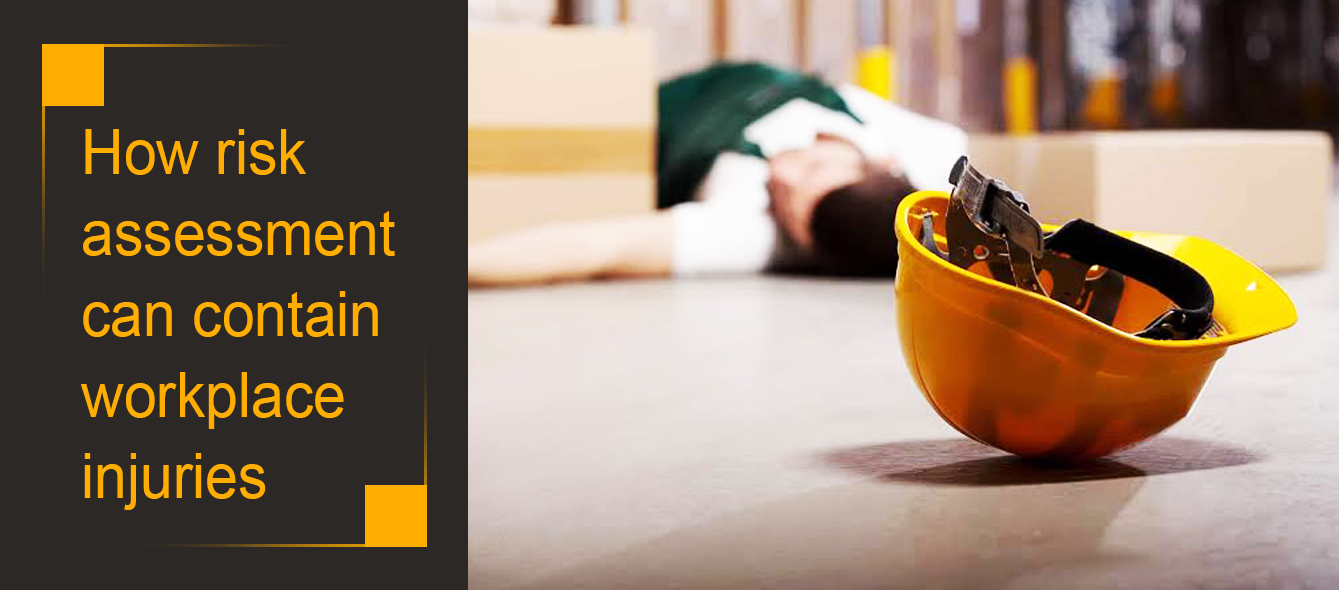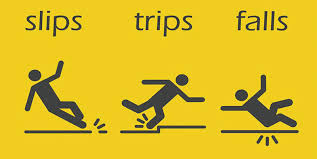
How risk assessment can contain workplace injuries
Employees experience various levels of risks and hazards at workplaces which can be avoided by doing regular risk assessments and following all mandatory risk control measures.
Risks of Slips, falls and trips

Some of the most frequent occupational injuries are due to slips, falls or trips, and by following regular risk assessment exercises, these risk factors can be controlled.
Risk due to slip, trip or fall is the second most common type of workplace accidents. The risk can be contained by:
- Keeping the premises clean, tidy and uncluttered
- Maintaining the floors and stairs in good condition and using slip-free walk-ways
- Controlling other trip hazards
- Keeping the premises well-lit
- Avoiding spillages of slippery items
Injuries due to slip can be minor or major depending upon various factors such as the nature of fall, environment or height.
Injuries caused by fork-lift trucks

Coming in the way of fork-lifts and other moving automobiles at workplaces may cause serious injuries. By assessing the causes, employers can contain the risks. Such accidents can occur due to various reasons, and some of them are:
- When pedestrians fail to use safe walkways and instead use paths of moving fork-trucks
- No explicit lanes for both pedestrians and fork-lift movements
- Inadequate training and awareness to both drivers and workers
- Absence of regular supervisions and appropriate control measures
- Failure to do regular maintenance or services to fork-lifts
- By not providing high-visibility personal protective equipment
The injuries caused due to hit by fork-lift trucks can be very severe and can even be fatal or lead to permanent disability.
Isocyanate paint risk assessment

Paints are the chemical mixture which contain hazardous isocyanate which can cause various health ailments. The label on a paint container or material data sheet provides the information of the presence of isocyanate which, on sustained inhaling, can cause asthma and other lung disorders. The extent of lung damage is due to:
- The quantity of isocyanate in the workplace air
- How frequently the painting work is done – either daily or once a month)
- Method of work like how the paint is applied. For example, spraying is more dangerous than using a brush
- People who are in the vicinity of painting work can also be affected.
- Work related errors such as spillages or polluting the atmosphere.
- Inadequate precautions such as no proper ventilation or failure to use personal protective equipment.
- Failure to comply with regulations and safety guidance.
By not doing risk assessment, the extent of risks due to improper work culture can be severe. A worker may develop asthma which can put him off from the work permanently.
Permit-to-work systems

Certain work conditions can prove hazardous to workers and hence permit-to-work system should be followed to safeguard workers who do repair, cleaning or maintenance services in dangerous areas.
Some of the works involving electrical, mechanical or process isolation or handling hazardous materials can sometime prove fatal. Permit-to-work systems analyse the risks and provide proper risk control measures for workers’ safety.
Such systems are necessary when machinery to be switched on when worker still inside it or working in inhospitable or confined spaces where workers can face chemical or gaseous contaminations.
It is the responsibility of employers to recognise the dangers involved in works before going for a permit-to-work system. It is also prudent to consider the Confined Space Regulations and other related safety practices.

 NEBOSH CERTIFICATE
NEBOSH CERTIFICATE NEBOSH DIPLOMA
NEBOSH DIPLOMA IOSH
IOSH SAFETY DIPLOMA
SAFETY DIPLOMA CPD UK
CPD UK ROSPA UK
ROSPA UK FOOD SAFETY
FOOD SAFETY 



